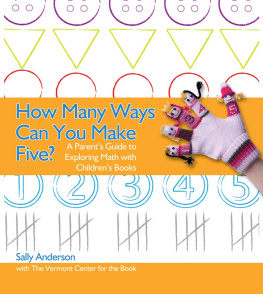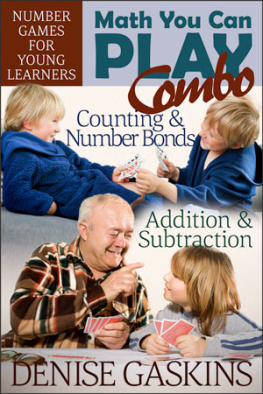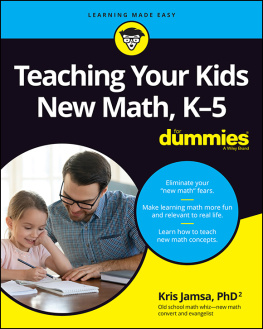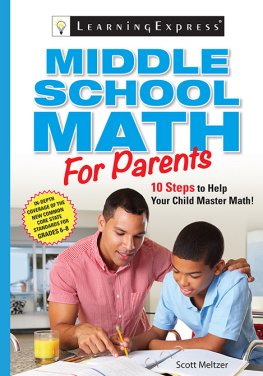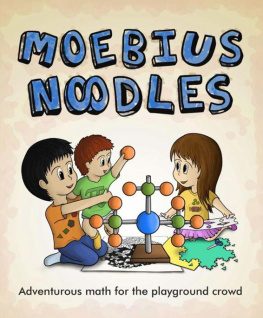
Also by Sally Anderson with the Vermont Center for the Book:
Social Studies and Me! Using Childrens Books to Learn about Our World
Where Does My Shadow Sleep? A Parents Guide to Exploring Science with Childrens Books
Math & Science Investigations: Helping Young Learners Make Big Discoveries


Bulk Purchase
Gryphon House books are available for special premiums and sales promotions as well as for fund-raising use. Special editions or book excerpts also can be created to specifications. For details, contact the Director of Marketing at Gryphon House.
Disclaimer
Gryphon House, Inc. cannot be held responsible for damage, mishap, or injury incurred during the use of or because of activities in this book. Appropriate and reasonable caution and adult supervision of children involved in activities, corresponding to the age and capability of each child involved, is recommended at all times. Do not leave children unattended at any time. Observe safety and caution at all times.
Copyright Sally Anderson with the Vermont Center for the Book 2012
Published by Gryphon House, Inc.
PO Box 10, Lewisville, NC 27023
800.638.0928; 877.638.7576 (fax)
Visit us on the web at www.gryphonhouse.com.
All rights reserved. No part of this publication may be reproduced or transmitted in any form or by any means, electronic or technical, including photocopy, recording, or any information storage or retrieval system, without prior written permission of the publisher. Printed in the United States. Every effort has been made to locate copyright and permission information.
Cover photograph courtesy of iStock Photo, LP. All rights reserved. 2012. www.istockphoto.com.
Library of Congress Cataloging-in-Publication Data
Anderson, Sally.
How many ways can you make five? : a parents guide to exploring math with childrens books / by Sally Anderson with the Vermont Center for the Book; Illustrations by Mary Rojas.
p. cm.
Includes bibliographical references and index.
ISBN 978-0-87659-386-8
1. Mathematics-Study and teaching (Early childhood)--Activity programs. 2. Childrens literature in mathematics education. 3. Education-Parent participation. 4. Picture books for children-Educational aspects. I. Rojas, Mary, ill. II. Vermont Center for the Book. III. Title.
QA19.L58A53 2012
372.7--dc23
2012004430
Table of Contents

Introduction
Children Love Math!
Children love to figure things out, and math is a great tool for problem solving! Use this book to explore the world of mathematics with your child. Sit and read one or two of the suggested childrens books, and then get up and do an activity together. As you have fun, your child will be learning about numbers, shapes, patterns, measuring, and lots more.
Young children use math concepts to investigate and understand their world by:
- Creating patterns using napkins, utensils, and dishes as they set the table for dinner;
- Counting and measuring while they help make a batch of cookies;
- Noticing that the structural featureswindows, doorsof their bedrooms contain more squares than triangles;
- Sorting and re-sorting their collections of toy cars, using different attributes each time; and
- Lining up their stuffed animals on the shelf from smallest to biggest.

Why Use Childrens Books to Talk about Math?
Stories are a powerful way to introduce mathematics. Researchers recommend using childrens picture books to develop math skills and understanding, because childrens books can:
- Provide a story context for mathematics content;
- Suggest manipulatives for a variety of math investigations;
- Encourage children to re-create stories in their own way, as well as to practice math skills;
- Suggest problems that can be solved using different strategies: How could we sort the laundry? How can we use these blocks to build a castle?
- Develop math concepts such as mapping, following directions, and finding shapes in the environment;
- Encourage the use of math language: How many? How far? How much?
- Help children make sense of their world.
Many wonderful childrens books easily lend themselves to the discussion of math concepts. For example, when you read one of the many versions of the story The Three Billy Goats Gruff, you can act out the story together using positional and directional words such as over, under, near, beneath, and behind; you can talk about the concept of three; you can learn about ordinal words such as first, next, and last.
How Many Ways Can You Make Five? was developed for children ages four and older, but most of the activities also work well with younger children. How Many Ways Can You Make Five? will help you and your child have fun reading about, talking about, and exploring math in your everyday lives
Reading to and with your child is a great idea! Childrens books engage your little one, opening a door to the joys of imagination. In addition, your child has a natural curiosity about numbers: How many? Howhigh? How long? Which is bigger? Which weighs more? Exploring math concepts provides benefits to your child for a lifetime. But using childrens books to talk about math? Yes! Youll be amazed at the ways your child begins to notice and make connections with numbers in everyday life.
Math Is Everywhere, All the Time
Reading books to your child and talking about math helps your child see all the connections between math and what he or she does every day.
Reading Together
- Borrow or buy books that have explicit math content such as counting and measuring. There are lots of counting books to choose from: 1, 2, Buckle My Shoe by Anna Grossnickle Hines or Ten, Nine, Eight by Molly Bang are just two suggestions. More books are listed in the bibliography.
- Read books that have repeated sequences of events. Point out the events, and give your child an opportunity to make a prediction by asking, What happens next? Books about routines, such as the classic Froggy Gets Dressed by Jonathan London or 10 Minutes till Bedtime by Peggy Rathmann, are fun to read.
- Look for math words and concepts in all picture books.
- Make connections between shapes in books and shapes in the environment.
- Talk about the problems the characters in a book are solving. Brainstorm other suggestions for solving those problems.
Talking Together
- Use appropriate math vocabulary such as:
- Sequence: What comes first? Whats next?
Next page
